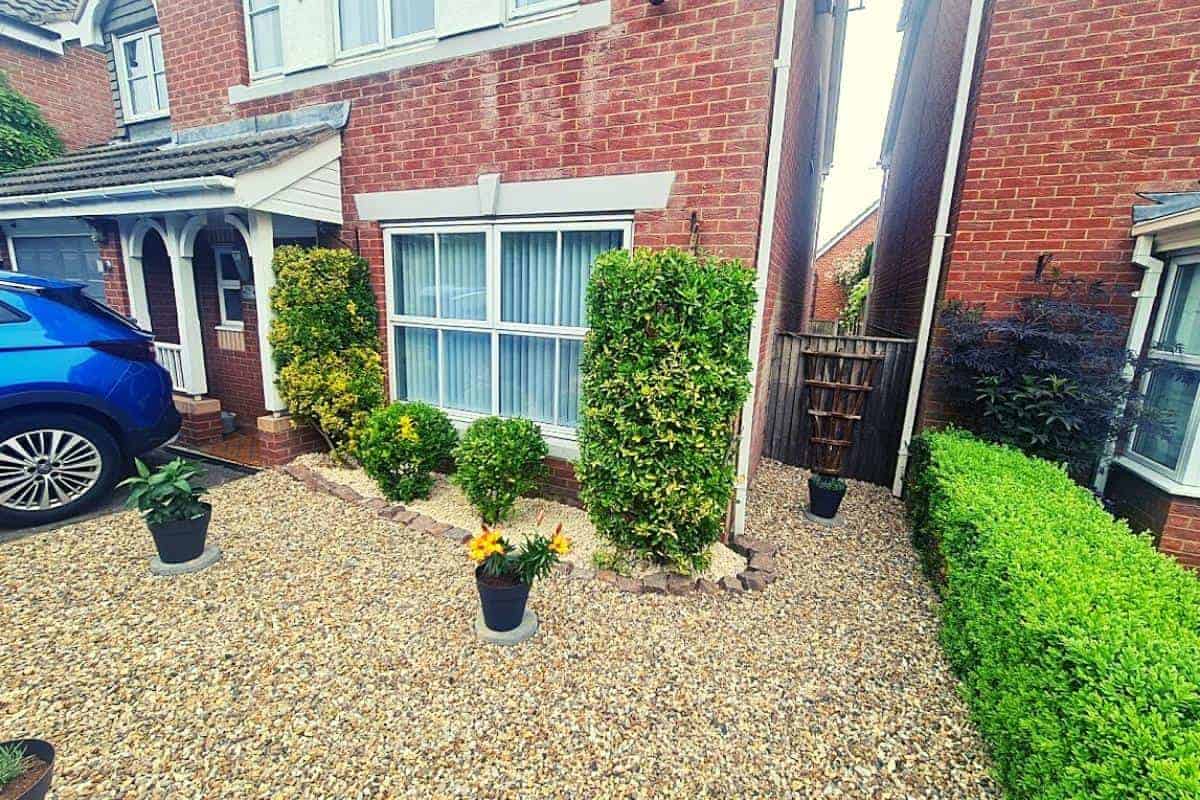Common garden design problems and how to fix them
This is a collaborative post.
For families, homes with gardens are much sought after. So, if you’re lucky enough to have a garden, there’s no doubt you’re itching to make the most of it. But not every garden is the perfect size or shape and sometimes they’re not ideally positioned. Equally if you want to sell your house a good garden can be a big selling point and increase property value. So, you might be having trouble working out how to make it attractive and usable. Thankfully, for every problematic space, there’s a trick to fix it.

Not enough sun
Shady, enclosed and north-facing gardens don’t always get as much sun as we’d like. This makes them less appealing to sit in and can limit the type of plants that will grow. Although you can’t physically move your garden, you can maximise the light reaching it.
Switch out high fence panels with lower ones, or go for a hit-and-miss or picket style to let a bit more daylight through without decreasing your garden’s security. A hit-and-miss garden fence costs around £50 per panel, while picket fence panels can be bought for as little as £20 a piece. Alternatively, you could go for metal or composite decorative screening.
If it’s foliage rather than fences that’s blocking out the sunshine, then the most practical thing you can to do is cut some of it back or thin out branches. But there are other tricks besides pruning that you can use to sneak in more sunlight. Using shiny and reflective materials such as mirrors and metal spheres, brightens garden surfaces and helps to bounce light around.
Too narrow
Even if they’re a good size, narrow gardens can be a bit impractical. They can be trickier to design as adding borders with decorative stones for example, around the edge only increases the sense of narrowness. So, how do you fit in planting and make the space more usable?
If your garden is long and narrow, then the best move you can make is to split it into square sections, screening off each one. This will make the space look less awkward. It can also help to simplify your design as each section can be dedicated to one thing, such as seating, veggie growing and play.
If your garden is narrow but not particularly long, you can use other visual tricks to make it wider. Shorter fence panels on each side may help and so can a raised section at the back. Adding in a winding path or a circular lawn or patio could help it to look less rectangular.
Heavily overlooked
Lowering your fences isn’t always the answer to garden design problems. Sometimes, you might want to do the opposite and make them taller. This is particularly true when you’re heavily overlooked. It’s worth saying that you may need permission to do this as there are some planning restrictions for garden fences. But it can help you achieve a bit more privacy.
If you are going with high fencing, you don’t want your garden to look too confined or unattractive. Choosing a more naturalistic fence, such as a woven willow or hazel type, can help.
You might prefer to plant rather than build your screening. Photinia, bamboo, ornamental grasses and large-leafed shrubs work particularly well. Meanwhile, canopies, pergolas and wooden shelters can help you create a seating area hidden from prying neighbours.
Steeply sloping
Not all gardens are flat, and a steep slope can make a garden practically unusable. But there are big plus sides to gardens that slope. They can give you a great view out of your garden and the surrounding area. So, why not make the most of this?
Terracing the slope not only means you can create flat sections that are easier to navigate and grow plants in but this design trick also gives you the ideal place to put seating. Placing your seating on the top section means you get to make the most of the views.
You can choose to go with a few wide tiers or lots of narrow tiers to suit your garden size and slope. You can give it a natural feel with wooden retaining walls or classical brick walls. You might go with white-rendered walls and some fragrant planting for a Mediterranean vibe.
Not enough growing space
Although small gardens are easy to maintain, they don’t always give you enough space for growing things. When a small outdoor space limits your growing ability, you need to get creative with your garden design.
It’s a good idea to start thinking vertically as well as horizontally. For instance, a pergola provides a great space for climbing plants and gives you a handy place to hang baskets, increasing your growing area further. Troughs and pots with hooks can be hung from your fences, and vertical gardening systems can turn your exterior walls into extra growing space. But don’t forget your horizontal spaces. Living roofs can be added to sheds and bin stores, enabling you to increase the greenery in your small garden.
So, when you start your home renovations, don’t forget to consider your garden design, even if it is small you can make it beautiful.